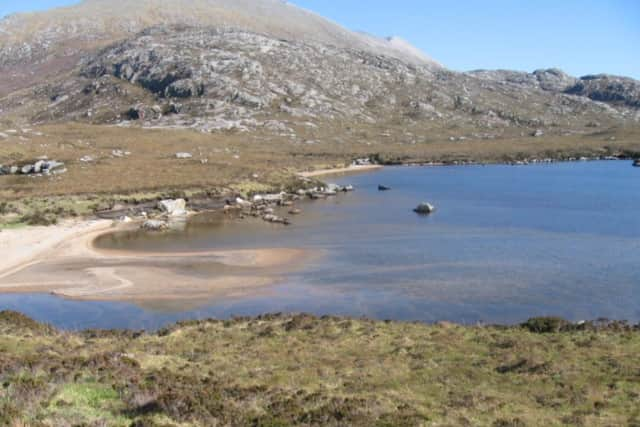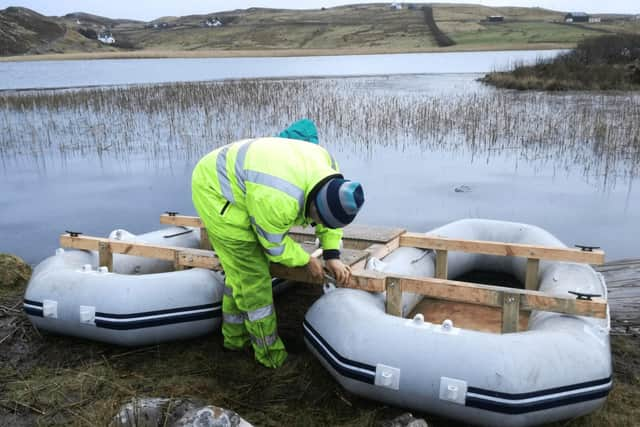'Surprise' find on Highland loch rewrites timeline of ancient water dwellers
Loch na Claise in Assynt witnessed human activity far earlier than previously known, with archaeologists believing they have may have found the first crannog from the Neolithic period on mainland Scotland.
Crannogs were dwellings built on artificial islands and may have been used as houses, gathering places or ritual sites.
Advertisement
Hide AdAdvertisement
Hide AdThe crannog at Loch na Claise has long thought to date to the Iron Age, from around 450BC, but analysis of sediments from the loch has rewritten the timeline of the site, with it now known there was human activity there during the Neolithic era, sometime around 3200BC.


The breakthrough in understanding of life at the loch was discovered by Dr Louisa Matthews, who conducted the research on the sediment core for her doctoral thesis at Newcastle University.
She said a new technique used in testing loch sediments could change the understanding of our ancient landscape given its ability to detect early settlements, which had been erased by later use.
Dr Matthews said: “The work at Loch na Claise confirms that we now have a new means of investigating difficult-to-excavate sites such as crannogs and islet settlements that can be applied to sites across Scotland and beyond. Many sites on water and in wetland areas are vulnerable to loss or damage through changes in land-use or the climate.
"This type of analysis, using multiple lines of evidence from well-dated loch sediment cores, has the potential to detect early settlement at sites even when later activity has removed most of their traces.”


Dr Matthews PhD research was funded by the Natural Environment Research Council and built on work by Historic Assynt and AOC Archaeology.
By gathering a core sample by driving a hollow cylinder into the soft sediments in the bottom of the loch to trap a section of material, which would allow her to track changes to pollen and chemicals in the water, Dr Matthews set out to understand the origins of the Iron Age community.
The evidence for an additional period of Neolithic activity had been an unexpected find.
Advertisement
Hide AdAdvertisement
Hide AdSeveral Neolithic crannogs are known across the Outer Hebrides, but the earliest crannogs in the Highlands have – until now – dated to the Iron Age. Several crannogs from the later period are also known to have lined Loch Tay.
The research at Loch na Claise has been published in the Celebrating Archaeology in Scotland 2023 magazine, which was launched at the Scottish Archaeological Forum conference in Aberdeen over the weekend.
Dr Andy Heald FSAScot, chair of the Scottish Strategic Archaeology Committee, said: “The discoveries at Loch na Claise and the many other fantastic projects showcased in Celebrating Archaeology in Scotland show how vibrant Scottish Archaeology is, and how much remains to be discovered. Scotland’s Archaeology Strategy continues to support and promote innovative work such as this, as well as the sharing of the results widely so that everyone can better understand Scotland’s past.”
Comments
Want to join the conversation? Please or to comment on this article.